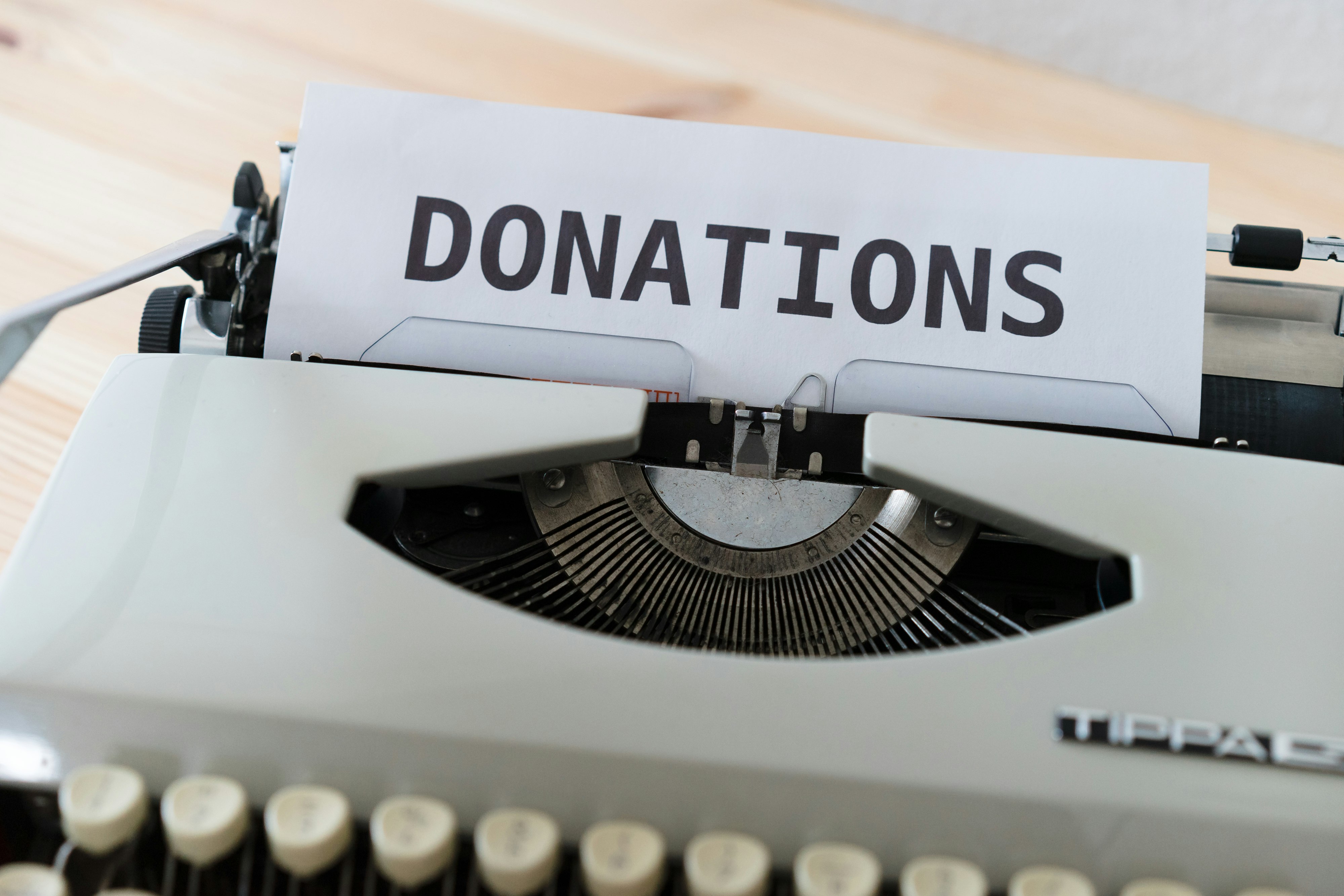CEO and Founder of Bloomerang Jay Love says, “building relationships probably goes back to prehistoric times; certainly Greeks and Romans knew the ways to build relationships, which is the essence of all fundraising.” When building relationships on SM, Love suggests you “find the most vociferous, most outgoing followers and let them ignite the army for you.”
Whether you’re igniting an army of followers or personalizing emails, social technologies help us build stronger relationships. These innovations are transforming fundraising into an Omni-channel effort, going beyond multi-channel methods and offering a seamless approach to the donor experience. Blackbaud Idea Lab Director Steve MacLaughlin points out, “Multi-channel was the term used for integrated fundraising for years; now we’re living in the Omni-channel environment; it’s mobile, it’s social, it’s multiple devices all at the same time.”
“The exciting thing now is there are lots more tools for fundraising and it’s like being a kid with new bits of technology to play with,” according to CEO of Raising IT Tom Latchford. He adds, “There are lots of mainstream methods that are already proven, things like SM monitoring, tracking news articles or hashtags, even the effectiveness of AdWords.” Latchford believes creative time can help ferret out what works for your organization. Nonprofits should fine tune use of these first, but Latchford reminds us, “There are lots of new things to try as well.”
When trying new technologies AccuFund CEO Peter Stam cautions, “Nonprofits don’t want to be on the bleeding edge, but they should be looking at the cutting edge.” His latest, hottest item streamlines the interface between Salesforce and their Accounting software; and it’s on their public appexchange for free. Stam suggests tight budgets make innovation difficult, “When people are checking every penny they spend on administration and every penny on fundraising just to stay below a certain percent, it’s hard to take risks.”
One high-tech low-risk solution is using a tablet to take donations in real time at a house party. Stam says, “One of our clients, Bead for Life, has bead parties. They sell beads made in Africa at parties throughout the United States. It’s a creative extension for an organization to have interactivity on a tablet in the party giver’s living room.”
While nonprofits struggle to find ways to increase revenue, technology is putting fundraising in the hands of donors. Tablet flexibility, instantaneous giving through one-click programs, crowdsourcing software and peer-to-peer campaigns continue to make raising funds more accessible to everyone. Passion for the organization and the ease of these Omni-channel tools is creating a wave of social actualization in the nonprofit sector. Fundraising platforms like Indiegogo, Kickstarter and Crowdfunder make it easy for donors to fundraise through their networks.
“We’re all using technology to make fundraising easier and more impactful,” according to nonprofit SM innovator Beth Kanter. She says, “SM is about using your passion to create change through your network." She adds, donors are “not standing alone, but with their network behind them” amplifying the impact. Ben Rattray, Founder and CEO of Change.org, agrees, "SM is allowing us to create change advocacy on a greater scale with more efficacy." Rattray suggests SM’s role as a fundraising tool should “look beyond dollars raised to fully capture benefits."
Learn more about the Sponsor of this Special Report: 
Jonathan Gibbs, Vice President of Products at Network for Good, says in their latest report, “The most surprising finding is the incredible growth of peer-to-peer fundraising.” Gibbs says the crowdsource model allows people to “raise money for any charity at any time not necessarily associated with an event, just associated with a personal interest or passion.”
Gibbs reports another surprising finding “…is how instantaneous giving needs to be in order for people of a younger demographic to give. People want a one-click experience, through a system where their information is preloaded.” He adds that 18% of online donations are from peer-to-peer or crowdsource campaigns with websites remaining the predominant way people give. Although only 10% of all charitable giving is online Gibb says, “That’s trending up and we’re continuing to see it evolve.”
“Engaging your most vocal champions to fundraise and conduct outreach on your behalf is vital,” according to Freeman White, CEO and Co-Founder of Launcht, a crowdsourcing platform. His data shows smart phones and tablet use account for 20% of all crowdfunding traffic. Freeman expects “these numbers to grow as changing age demographics, advances in responsive web design and new device adoption rates all continue to favor browsing and donating through mobile devices.”
Claire Kerr, Director of Digital Philanthropy at Artez Interactive, identifies “…three pillars of peer-to-peer mobile giving: browsers, apps and SMS (Short Message Service). Over 48% of crowdsource giving traffic is via phone.” According to Give by Cell Marketing Manager Katherine Defensor, “People are quickly realizing that mobile is the way to go,” Defensor says, “The trend is all about mobile—mobile engagement, mobile fundraising, mobile bid auction—even though old methods still work, organizations are finding mobile opens new donor markets.”
While SMS platforms make mass scale fundraising easy, Defensor admits the downsides: small donations of five-to-ten dollars, lag in collection and limited data gathering. Similarly, the downsides of phone apps are pushing organizations toward responsive programs. Defensor says, “We started with apps, then realized it’s really expensive to do changes, so we made it easier…’’ shifting to a web-based platform that’s “…more adaptable and easily customizable.”
Web-based programs send constituents to a mobile donation webpage allowing larger gifts and deeper data collection. Defensor cautions, “keep campaigns simple with their own landing page instead of sending people through a distracting website.”
Learn more about the Sponsor of this Special Report: 
SofterWare Vice President of Fundraising Products Jonathan Biedermann believes, “Mobile is all overkill. Less than half the people over 64 have smart phones, and that’s your average donor.” Ten percent of all donations are made online, and less than 10% of those come from a mobile device, either phone or tablet. Biedermann points out, “Less than one percent of all giving comes through mobile.”
Clearly nonprofits may want to focus some attention on mobile if their donors are younger. However, Biedermann cautions, “It’s only used for awareness, if you’re trying to raise money with mobile you’re looking in the wrong place.” He suggests older donors give via traditional methods, “Direct Mail is not dead; telephone remains effective and face-to-face is still the number one way to reach donors.”
Biedermann is skeptical of social fundraising, “Compared to practically everything else out there SM has the lowest return.” He admits SM can help with prospect research and identifying influencers who have large networks where they can push out an organization’s message. Donor Perfect software can grab information from FB and twitter feeds, which can be used to find your influencers. Biedermann says, “They may not give, but if they’ve got 1,000 friends, that’s valuable.”
Emily Ledford, Business Development Consultant at Donor Drive says nonprofits are doing everything they can “…to take advantage of the technology and social platforms available to raise funds and awareness.” Ledford says, “Donors create a campaign page online for an event or organization using twitter, FaceBook (FB), Google Plus, LinkedIn and email. They send it to friends, family and co-workers with the expectation that re-tweeting, re-FaceBooking, commenting will grow their network virally.”
Ledford suggests offering template pages for donors to customize. Minimizing effort allows them to “…get to fundraising, rather than worry about page creation.” Ledford says accessibility “…allows constituents to use the fundraising page in a myriad of ways and pass it on to others” through this Omni-channel environment.
Donor Drive’s robust reporting capability focuses on identifying how much constituents are raising, where it’s coming from and who’s raising it. Ledford says, “With an open API (application programming interface), Donor Drive is destination-neutral so reports integrate with databases like Salesforce and Raiser’s Edge.”
A 2013 report by the Nonprofit Research Collaborative shows, "SM and online giving still raise only 10% from all the tools used, but that’s growing,” according to Melissa Brown, Principal at Melissa Brown and Associates. While nonprofits invest in SM, fundraising should remain focused on direct response. Brown reports, “51% of all nonprofits saw an increase in direct mail fundraising. It’s a national case for keeping direct mail. It’s not just doing well, its doing great everywhere.”
As far as SM goes, Telosa COO Christopher Fink says, “It’s something we’re still figuring out and there’s a lot of hype around it.” Telosa, like many software products, interfaces with SM and email marketing services that target specific technologies. Fink adds, “There’s still plenty of direct mail depending on the organization, but most nonprofits are moving into less expensive email marketing.”
When tracking donors there’s an awareness of what can be done with the ever-increasing amount of data. Fink cautions, “Now that we have this data, we have to know what to do with it.” Cloud-based programs allow for increased flexibility in analytics. Finks says, “We have ways of interacting with information, segmenting lists and choosing fields from several screens all in real time.” Mobile, social and tablet technologies all make it easier for the fundraiser in the field to connect with donors. But Fink points out, “What it comes down to is building relationships with donors. SM can enhance that relationship.”
In this Omni-channel environment donor interaction is easier for nonprofits, especially when it comes to listening. Director of Major and Planned Gifts at St. Agnes Academy Lisa Chmiola says, “If you’re not monitoring what people say about you, other people will.” Technology has made it easy for even a small office to monitor the web using keywords and search programs.
Chmiola believes, “SM needs to be thought of as a tool in your communications arsenal to help people find out about your organization.” In her review of fifteen SM tools, Chmiola stressed nonprofits should sift through and focus on tools that make sense for them, whether it’s monitoring streams, prospect research or raising awareness. Clair Kerr from Artez Interactive reports, “Approximately ninety percent of all SM referral donations come from FB.” She adds, “Organizations can no longer ignore FB’s potential.”
Ritu Sharma, Co-Founder and Executive Director of Social Media for Nonprofits, says it’s important to have a SM strategy. For FB, Sharma recommends, “Post once a day; if it’s really exciting, twice.” People tend to be on certain SM after working hours and some of us will even open email on our phone or tablet while watching television. Consider the best time to reach your constituents, then schedule posts with a SM management tool like Hootsuite or TweetDeck.
With all the technology to help nonprofits traverse the Omni-channel environment it’s even more important to have something memorable and engaging to say and that may not be about your mission. Darrien Rodriguez Heyman, CDO and Cofounder of Better World Wireless, suggests nonprofits use SM “to promote thought leadership in the field not just send out content about their work. Content should focus on being compelling, concise and credible.”
Mobile, social and tablet technologies are making fundraiser’s work easier in the field and in the office by offering access to reports and data in real time. But they also open an Omni-channel environment where donors are raising funds and spreading the message—giving them more control than ever before and transforming the fundraising landscape.














 Technology is forcing fundraising to focus on simplicity, but it’s complex. Through new gadgets on our phones, social media (SM) and tablets we are able to fundraise in a myriad of more efficient ways. All of them require us to focus on the core of fundraising—building relationships.
Technology is forcing fundraising to focus on simplicity, but it’s complex. Through new gadgets on our phones, social media (SM) and tablets we are able to fundraise in a myriad of more efficient ways. All of them require us to focus on the core of fundraising—building relationships.